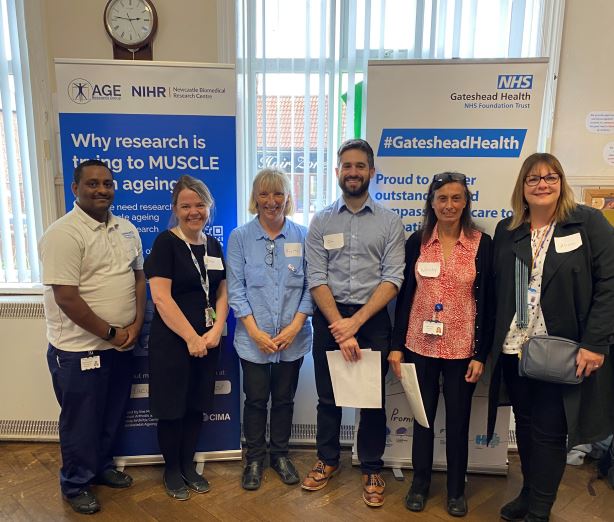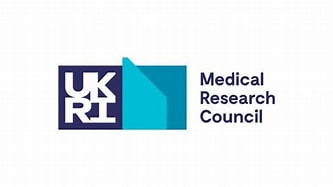News
Patient and Public Involvement and Engagement Case Study
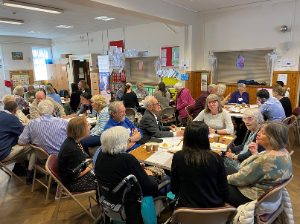
How to design a public engagement event for an underserved group of older study participants.
What's the issue?
Despite the UK having an ageing population, older people are often excluded from research and remain an underserved population group, as noted by the NIHR INCLUDE guidance. The need for a greater research effort for older people was also highlighted in the Chief Medical Officer’s annual report 2023: Health in an Ageing Society.
Our work in the Ageing, Sarcopenia and Multimorbidity theme (ASM) of the NIHR Newcastle Biomedical Research Centre is designed to address this research gap. We recently completed the MET-PREVENT trial to determine whether the drug metformin, commonly used to treat diabetes, could improve physical function in older people living with sarcopenia (muscle weakness) and frailty.
To share the findings from MET-PREVENT, we wanted to design an engaging public event that was accessible and of interest to a group of older adults, many of whom live with frailty and multiple long-term health conditions.
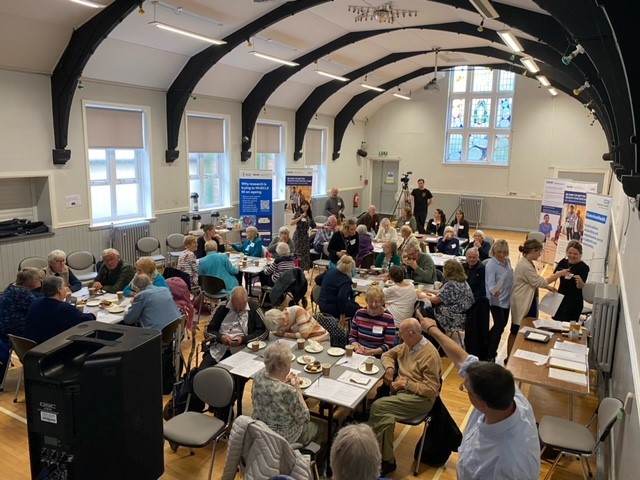
What did you do?
At the planning stage we worked with a range of stakeholders, including a public member of the MET-PREVENT steering group, three study participants, a Research Nurse, and the Principal and Chief Investigators - meeting in person, via Teams or over the telephone.
These discussions informed the nature and design of the public event – from overall concept to practical details. For example, study participants emphasised the importance of being thanked for taking part in the study, but also indicated that a suggested ‘icebreaker’ or an interactive exercise session would be less well-received. A main talk about the study with a question-and-answer session that gave attendees the chance to share their views, followed by small-group discussions over tea and cake, was agreed on, with the title: ‘MET-PREVENT- A Thank You Tea Party’.
Other practical issues discussed included enabling each participant to bring along a guest, the option of transport to/from home, and the best time of day for the event. We planned to run the tea party twice at different community centres, that were accessible and relatively close to participants’ homes. We agreed that the main talks would be filmed for anyone who couldn’t attend and notes taken so that ideas and discussions could be captured and shared.
To evaluate the success of the tea parties we developed a feedback form with the stakeholders for attendees to complete on the day as well as providing an option to capture feedback on post-it notes or via short sound bites.
What happened?
Over 80 guests attended the two tea parties who included a diverse mix of study participants and their guests, and members of the wider multi-disciplinary study team. The feedback we received, both written and verbal, was very positive.
The small-group discussions enabled participants to provide further feedback on the MET-PREVENT study. Participants were asked ‘what you did and didn’t enjoy’ and ‘how the study could be improved’. This feedback, such as the highlighted value of home visits, will directly inform ASM plans for future research.
What could other people take from this?
- Working in partnership with stakeholders, such as older study participants, is key to shaping the design of successful public events.
- Discussions with stakeholders should be held from the earliest planning stages, with views on the aims and event content collated to determine an agreed design. A flexible approach to venues and timing of planning meetings enables a range of stakeholders to take part.
- Accessibility and location are key priorities in choosing appropriate venues for events. Additional funding may need to be secured to ensure the budget is sufficient to cover transport to/from the venue, including taxi costs, and audio-visual support.
- Informal small-group discussions are well-received, as they enable attendees to meet researchers and provide opportunities to discuss other current and new research projects.
- Use of multiple channels of communication helps to enable reach to a wide range of participants. For face-to-face events, videoed presentations and a plain English summary can be provided for non-attendees.
Are there any resources or outputs?
- A news piece was created - Public thanked for being part of research - NIHR Newcastle Biomedical Research CentreNIHR Newcastle Biomedical Research Centre
- Over 1.6k views and 9 reposts of the event coverage on X (Twitter).
- Recordings of the main talks:
Friday 15th September 2023 – Westerhope Community Centre: Professor Miles Witham shares the study results at the Newcastle tea party
Tuesday 19th September 2023 – Whickham Community Centre: Dr Claire McDonald, shares the study results at the Gateshead tea party - The tea parties also provided an opportunity for attendees to hear about a new patient registry: The UK Multiple Long Term Conditions Research Registry. Thirty attendees signed up.
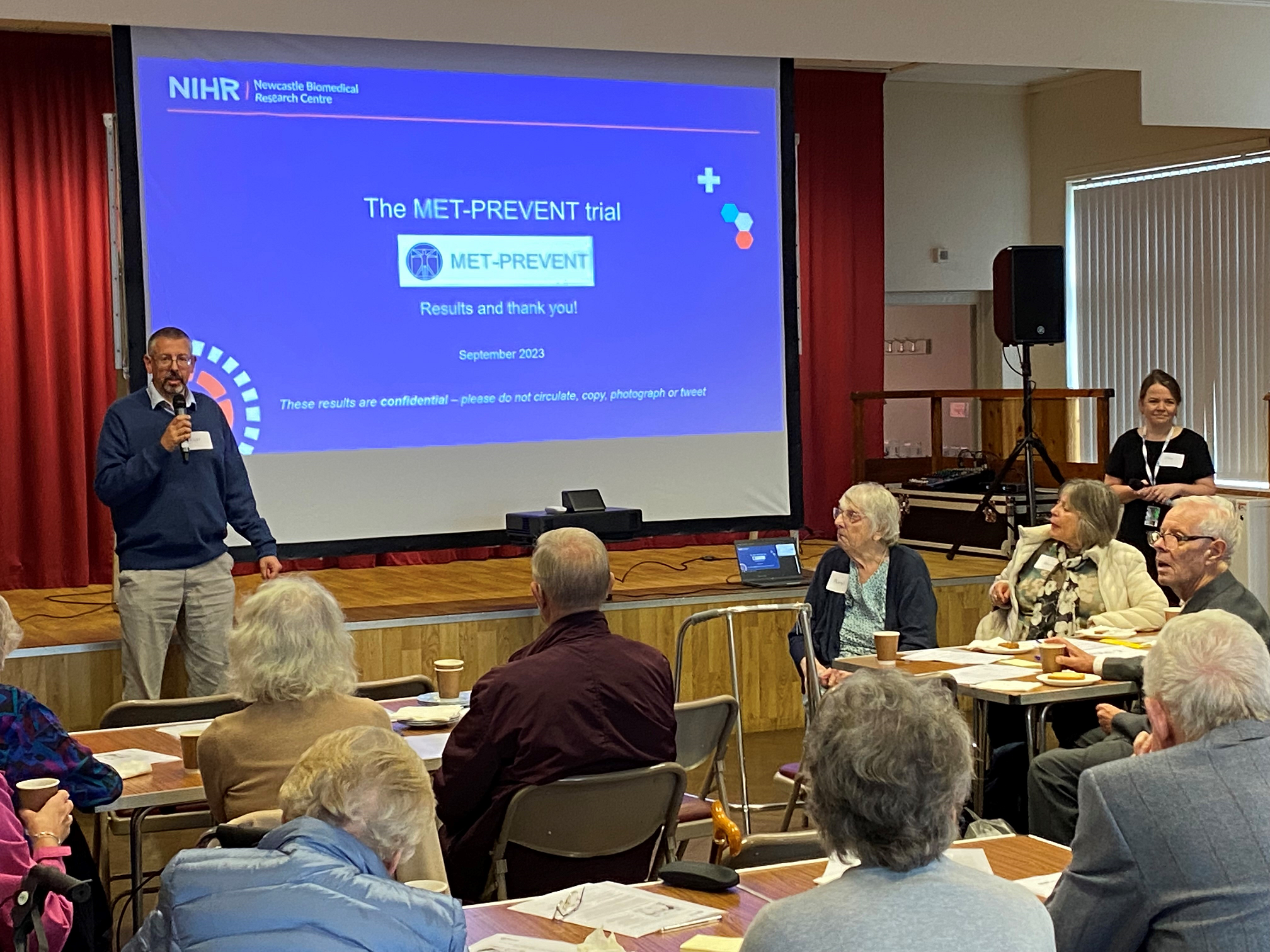
What happens next?
A plain English summary of the study results has been drafted, working in partnership with a public steering group member, and sent to all the study participants, along with a note of which treatment they were taking during the trial.
Participants’ feedback on the MET-PREVENT study has been documented and will be used to inform the design of future ASM studies.
Event attendees’ feedback will inform the design of future public engagement events.
The results of the MET-PREVENT study have been presented at scientific conferences and drafted for publication. The public member of the trial management group, is a co-author on the conference abstracts and paper.
Last modified: Mon, 25 Mar 2024 13:10:11 GMT

